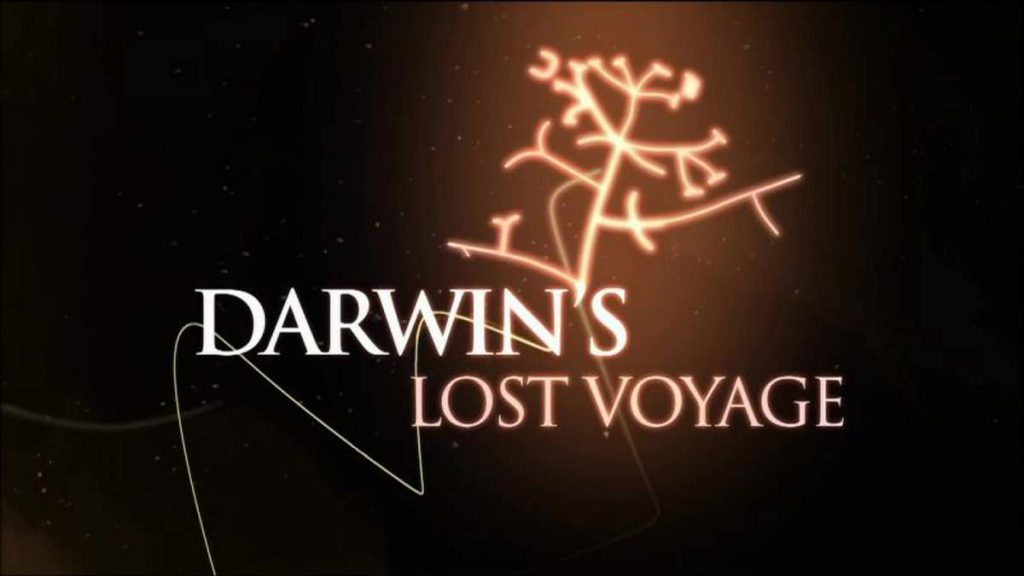Darwin’s Lost Voyage: Contrary to conventional belief, Darwin’s greatest epiphanies do not occur on the Galapagos islands. Instead, they are a cultivation of years exploring the wilds of South America where forests become the cathedral of Darwin’s religion. Encountering a world like he’s never seen before, Darwin’s senses are overwhelmed by a world teeming with life, but what he finds along the way is perplexing to a 19th century naturalist.
He questions why do the fossils he discovers look like giant versions of the sloths and armadillos still living nearby; why do the penguins and other birds he sees use their wings as flippers, fins or sails – but not for flying; how could sea shells be found embedded in rock layers more than 100 miles from the sea? It is not until after he leaves the Galapagos – where mockingbirds, not finches capture his attention – that he is able to fully appreciate everything he has encountered and pull together his masterwork: The Origin of Species.
Along the wild edges of the Earth, against a stunning backdrop of aerial, underwater, and wildlife photography, evolutionary biologist Armand Leroi leads us on an unforgettable journey–and uncovering the evidence–that inspired Darwin’s revolutionary work, “On The Origin of Species.
Its the story we havent heard. Though he circled the world on the H.M.S. Beagle for five years, Darwin spent only five weeks on the famed Galapagos. He had no epiphany there, no Newton’s apple falling from the tree. So what was it? What certain facts from the voyage led this young Creationist to propose a theory so radical it remains controversial (though widely proven) 150 years later?
“Darwin’s Lost Voyage” brings passages from Darwin’s writings to life, as we see the clues he saw while listening to his words and watch in wonder as CGI animates his ideas, focusing us on critical details and revealing the lucid epiphanies of a magnificent mind. Using Darwin’s own diary and field notes, Armand Leroi goes beyond the Galapagos to explore forgotten shores to witness the very creatures, fossils and places that captivated the young naturalist’s imagination… and changed the world forever.
Darwin’s Lost Voyage
Charles Robert Darwin was an English naturalist, geologist and biologist, best known for his contributions to evolutionary biology. His proposition that all species of life have descended from common ancestors is now widely accepted and considered a fundamental concept in science. In a joint publication with Alfred Russel Wallace, he introduced his scientific theory that this branching pattern of evolution resulted from a process that he called natural selection, in which the struggle for existence has a similar effect to the artificial selection involved in selective breeding. Darwin has been described as one of the most influential figures in human history, and he was honoured by burial in Westminster Abbey.
Darwin published his theory of evolution with compelling evidence in his 1859 book On the Origin of Species. By the 1870s, the scientific community and a majority of the educated public had accepted evolution as a fact. However, many favoured competing explanations that gave only a minor role to natural selection, and it was not until the emergence of the modern evolutionary synthesis from the 1930s to the 1950s that a broad consensus developed in which natural selection was the basic mechanism of evolution. Darwin’s scientific discovery is the unifying theory of the life sciences, explaining the diversity of life.




